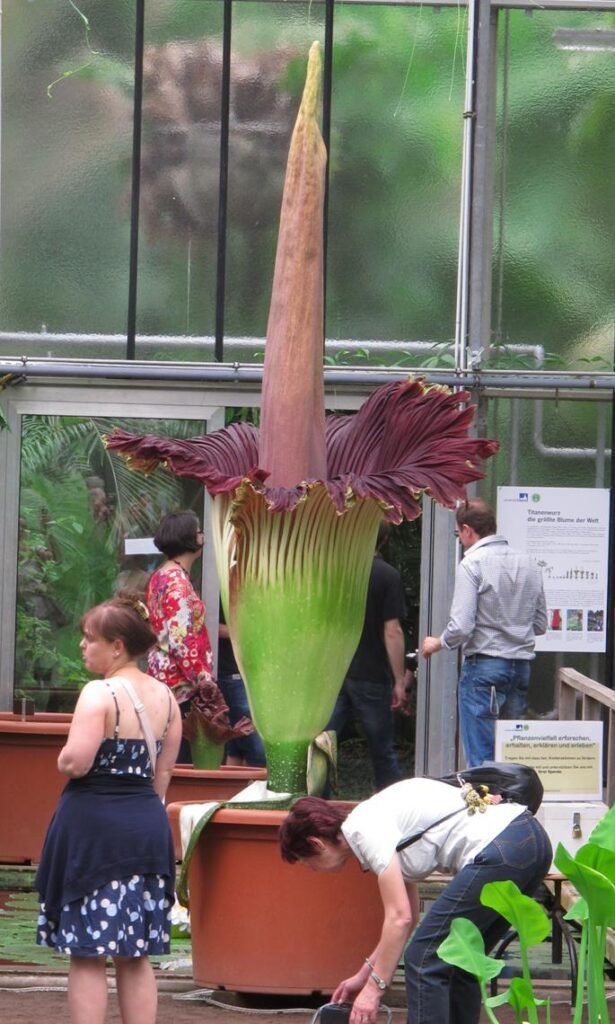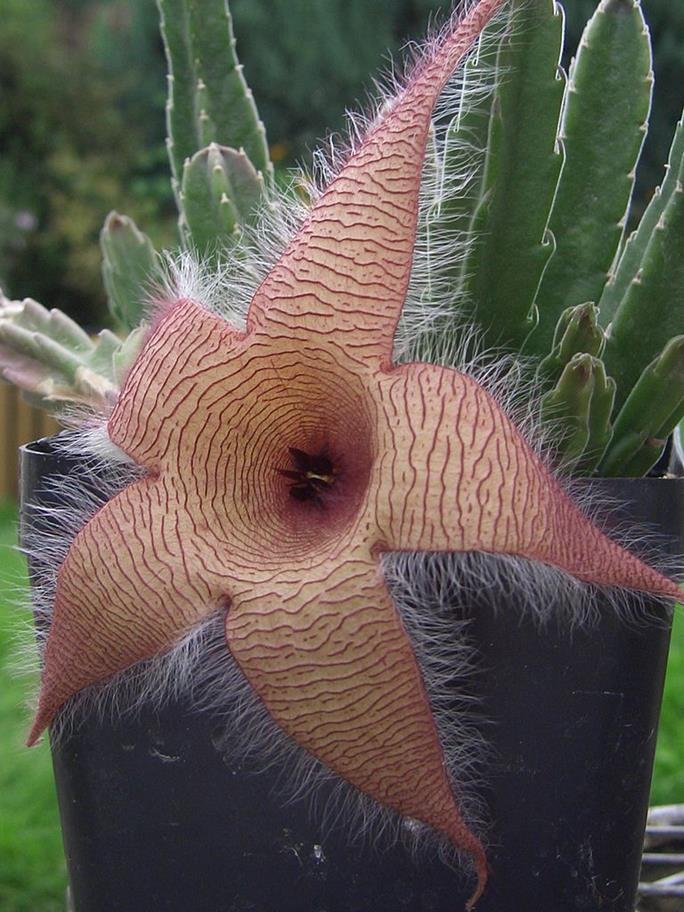Most flowers have a fresh, sweet, floral, lemony, fruity, nectar-like, spicy scent, or a combination of some of these scents. However, some flowers, the so-called ‘stinking flowers’, have foul, objectionable, or unpleasant odors that many can’t stand.
Most of these smelly flowers have strong odors that mimic decomposing flesh or rotting meat. Others smell like a skunk, hydrogen sulfide, rotting eggs, or cabbage.
This article discusses some of the causes and roles of scents in flowers. It will then look briefly at the six common flowers, which are known to have an unpleasant odor.
What causes a stinking odor in flowers?
Flowers have various scents, including stinking ones, due to the volatile organic compounds (VOCs) they contain. These compounds include sulfur and fatty acids, terpenes, terpenoids, phenylpropanoids, and benzoids.
For instance, terpenoids and terpenes cause a fruity, floral, or fruity scent, while benzenoids or phenylpropanoids are behind the spicy, sweet, or floral scent.
On the other hand, compounds like fatty acid derivatives cause a leafy, green scent while sulfur-containing compounds have a foul or unpleasant odor. You can now guess what causes the stinking odor.
Why do they produce these fragrances?
Flowers produce certain scents to attract specific pollinators, such as insects, invertebrates, birds, and bats, which are essential for reproduction. However, pollination is not the only reason. Some scents deter herbivores, and others help plants communicate.
Lastly, the evaporation of various scented VOCs that flowers produce helps with thermal regulation. Thermal regulation helps lower temperatures that could hurt sensitive reproductive structures.
What are the common stinking flowers?
The notable stinking flowers are titan arum (Amorphophallus titanium), corpse flower (Rafflesia arnoldii), and skunk cabbage (Symplocarpus foetidus). The clarion flower (Stapelia gigantea), Bulbophyllum phalaenopsis, and dragon arum (Dracunculus vulgaris) also have malodorous blooms.
You must be curious about what these flowers smell and look like. Let’s briefly describe each of these plants with stinky blooms.
1. Titan arum
Titan, or corpse flower, is a large, inflorescent flower that smells like decomposing carcasses or flesh. The pungent smell quickly attracts its pollinators, primarily the clarion flies, but can also attract other insects.
The titan flower is essentially a spadix with a spathe or leaf-like bract, which is greenish outside and burgundy inside. It is the largest unbranched inflorescence in the Plantae kingdom, measuring 6–8 feet in height or up to 10 feet (3 meters). Another plant, Corypha umbraculifera, however, has the largest branched inflorescence flowers in the world.

This stinky flower grows on the arum plant, botanically known as Amorphophallus titanium. This unique plant has a big tree-like leaf measuring 20 feet high by 16 feet wide and a gigantic corm weighing over 150 kilograms.
2. Corpse flower
The flower of Rafflesia arnoldii (commonly known as the giant padma or corpse flower) emits a strong odor that resembles rotten meat. This smell attracts beetles and flies that feast on rotting meat, which is vital for pollination.
This large, foul-smelling flower is reddish with whitish spots, measures about 3.3 feet, and weighs about 11 kilograms. Besides the odor, this plant is native to Borneo and grows on a fleshy mass without roots or leaves amongst Tetrastigma vines.

3. Bulbophyllum phalaenopsis
Bulbophyllum phalaenopsis is an orchid species native to Papua New Guinea that thrives and grows in wet tropical conditions. This epiphyte is the largest among orchids of the genus Bulbophyllum.
What makes the Bulbophyllum phalaenopsis flower unique is the smell of decaying flesh or meat that attracts the clarion flies, its principal pollinator. These hairy, reddish-brown flowers somewhat resemble meat.
4. Skunk cabbage
Swamp, meadow, or skunk cabbage (Symplocarpus foetidus) has a skunk-like, strong, nauseating, or putrid smell. Its smell resembles rotten eggs, burning rubber, or a hydrogen sulfide mixture; you can feel it from half a kilometer away. This smell worsens when you cut or crush it.
Some people, however, describe the smell as mimicking fresh mustard, cabbage, or garlic. Like beauty, smell is subjective, and some people have a heightened sense of smell.
The stinking cabbage is native to North America and grows large leaves up to 22 inches long and 16 inches wide. Its flowers are in the form of a knobby, greenish-yellow spadix with a surrounding hooded spathe. The spathe is reddish with green or yellow streaks.
If you wonder whether it is edible, the answer is yes, but you must know how to prepare it. Preparation involves repeated boiling and changing water to get rid of the smell.
5. Dragon arum
The stinky lily or dragon arum (Dracunculus vulgaris) plants produce flowers with an unpleasant, rotting flesh smell. These foul-smelling blooms attract pollinating insects like Lucilia, a blowfly that feeds on carcasses.
The dragon arum plant is not a lily, as the name suggests, but a member of the arum family, native to Greece, the Aegean Islands, Turkey, and Crete. It grows 4 to 6 feet tall and produces dark inflorescences whose dark purple spadix protrudes from a deep maroon to a dark, nearly black, purple spathe.
Despite its pungent smell, the dragon lily is a common garden plant whose stench fades after about two days. The show-stealing flowers stand out.
6. Clarion flowers
The clarion flower is another stinking flower whose rotting flesh attracts pollinating flies. Its botanical name is Stapelia gigantea, and it goes by many other common names, such as the Zulu giant, dead horse plant, giant toad, or starfish flower.
Stapelia gigantea is native to southern Africa, from South Africa to Tanzania. During its blooming season, it produces wrinkly, silky red and yellow flowers measuring up to 10 inches with a hair fringe.
Conclusion
Most stinking flowers have a strong rotting flesh, rotten egg, or hydrogen sulfide smell. These odors originate from the various VOCs they contain and serve specific roles.
These fragrances’ key roles are to attract specific pollinators and deter herbivores. Additionally, the scents may signal dangers and aid in keeping the flower cool.
